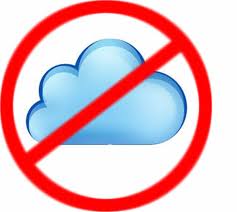It seems funny when actually thought about, as there are more books being printed now than ever before (750,000 +/-every year). Self publishing has opened the doors for many would-be authors and crowd-funding has made it easier than ever to get backing for a novel. Underground magazines seem to crop up on any topic one can imagine, many either crowd-funded or sometimes even just copied on an office copier and stapled in the corner. How does this have anything at all to do with the architecture, engineering and construction (AEC) industry?
 We have been in the AEC industry for a little over 50 years. In the last 20 years we have been hearing rumors that “print is going away”. Not too long ago we were running set after set after set of ammonia-developed diazo blueline prints. Then there was shift to the “cleaner” electrostatic black and white prints. While the images themselves may have been cleaner, toner and paper dust posed their own unique challenges. Technology has come a long way with the filtering of ozone and toner, up to and including 100% toner efficient, and even full color print capable electrostatic machines.
We have been in the AEC industry for a little over 50 years. In the last 20 years we have been hearing rumors that “print is going away”. Not too long ago we were running set after set after set of ammonia-developed diazo blueline prints. Then there was shift to the “cleaner” electrostatic black and white prints. While the images themselves may have been cleaner, toner and paper dust posed their own unique challenges. Technology has come a long way with the filtering of ozone and toner, up to and including 100% toner efficient, and even full color print capable electrostatic machines.
About 5 years ago, we created a Digital Services portion of the company. This was a fairly new part of the company, just making its first steps with CD’s and later DVD’s. We graduated to Flash Drives and FTP sites. Now we’re using high volume file sharing and transfer sites to move information that would have previously taken hours in minutes (and sometimes even that seems too long). Again, how does this have anything at all to do with the AEC industry?
In the last approximately two years, we’ve been watching the amount of hard copy prints we print decline as we’ve watched the number of digital sets we distribute increase. Five to six years ago, when we would receive a request for the digital files from someone for a plan set, we thought to ourselves, “These guys are crazy!” As it turns out, they most certainly were not crazy, they were visionaries, moving in a path the rest of us would catch up to years later.
The Onion wrote an article entitled “Print Dead at 1,803”. While it was a satirical piece, the message that The Onion was tongue-in-cheek conveying may indeed have a slight ring of truth to it. In the last 2 years, we have watched as at first there were only a few companies interested in the digital files of a plan set, usually as an “archive set”. Then it was about a quarter of the companies obtaining sets were digital orders for sets. Now, fully half, sometimes even up to 2/3 of the number of ordered sets are digital sets.
Does this mean we think print is going away? No! We firmly believe that there will ALWAYS be a place in our world for printed media, plans especially. We think the days of having all field construction on a project done using fully digital plan sets (touch screens & tablets) IS in our future, but we’re not quite there yet. Who knows, there may be some companies out there who are already there, 100% paper free. If that’s the case, give the rest of us a few years to catch up. We may think you’re crazy now, but we’ll think you visionaries then.











